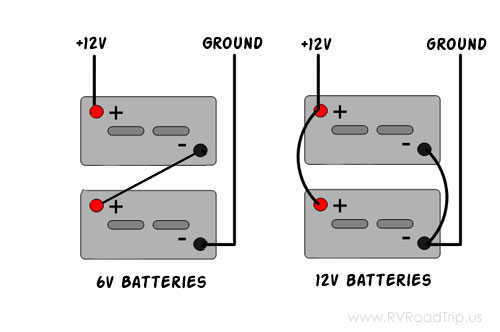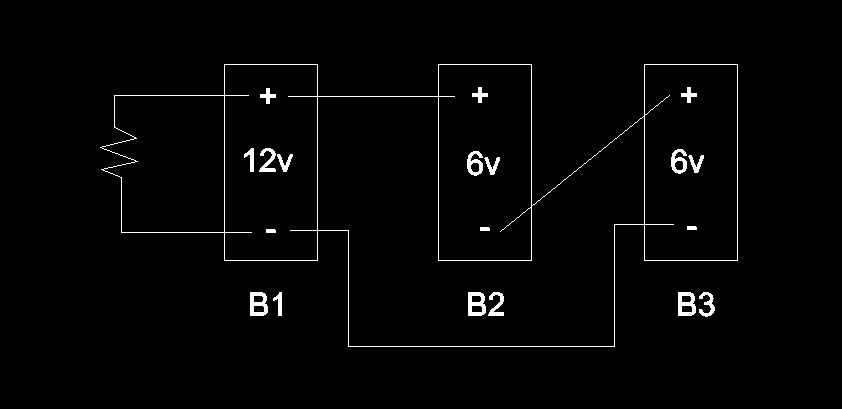Forum Discussion
25 Replies
- MEXICOWANDERERExplorerTemporarily connected is OK. But for whatever reason the temptation to "leave them connected" becomes quite strong. I would use jumper cables not permenant lugs and cables. The recipe for each class of battery is different, voltage wise.
I remember being lazy 30 years ago and playing Layback Lenny with a mixed bank of gel and calcium/calcium batteries. Swift kick in the butt time. I lost 5 Sonnenschein gel batteries over thar one. Woowee that shivered my timbers. - BFL13Explorer IIRoy, while camping for a few days it doesn't matter if one gets to 89% while the other gets to 91%. It will all get sorted out at home later on, when you do each up to baseline SG separately.
Where this all goes sideways is when the RVer has to park his rig in storage because he is not allowed to park it at home. Now all sorts of "work-arounds" have to be deployed. - RoyBExplorer III have never had good luck mixing two 6VDC batteries in series with one 12VDC battery.
I have found it is best to be sure the batteries you're connecting have the same voltage and capacity rating. Otherwise, you may end up with charging problems, and shortened battery life.
I have on occasion connected these two battery groups together using my BLUE SEA 4-position battery switches still maintaining 12VDC but when it comes to charging them I would never combine these two groups. I would charge them as independent groups.
The differences of the two type of batteries would not charge the same when paralleled together with a single charger source...
The same less battery performance is probably screwed up as well when drawing current from the two groups in parallel but that is more livable.
When charging you want both group to get to their 90% or 100% charge state before using them again...
I'm probably splitting hairs here but have been following this procedure for a few years now and getting long battery life...
All of this is only based on observed approximate charge states of each of the batteries.
Roy Ken - wa8yxmExplorer IIIB1+ to B2+ as shown
B2- to B3 + (not as shown)
B1- to B3 - (not as shown)
Or you can think of it like this
The 12 volt battery is represented by
-{Battery}+ 12 volts
The Six volters like this
-{Bat}t{ery}+ 12 volts
That is two half batteries in series
The combined
-{Battery}+
{Bat}t{ery} 12 volts - PadlinExplorer

Or this - PadlinExplorer

Any idea how this would effect total capacity? - BFL13Explorer II
MEXICOWANDERER wrote:
5% antimony versus 2.75% antimony is not a good mix. Keep an eye on the six cell battery the three cell batteries are going to whip it's butt. When they are charging or discharging they are too busy to fight. It's at rest they get bored and pull the wings off the weakling.
Yes, after camping off-grid with them all linked like that, separate the two "12s" when on shore power, and put one "12" on the converter and the other "12" on its own maintenance charger.
Although there is some confusion here on that. Some say you can leave them all connected as long as they are on a float charger, while others say float them separately.
Everybody agrees to separate them if they are just sitting there with no float charger on them. - BB_TXNomad
sch911 wrote:
This way would be better:
Much much better unless you want to destroy your batteries. - sch911ExplorerThis way would be better:

- MEXICOWANDERERExplorer5% antimony versus 2.75% antimony is not a good mix. Keep an eye on the six cell battery the three cell batteries are going to whip it's butt. When they are charging or discharging they are too busy to fight. It's at rest they get bored and pull the wings off the weakling.
About Technical Issues
Having RV issues? Connect with others who have been in your shoes.24,298 PostsLatest Activity: Aug 09, 2025
